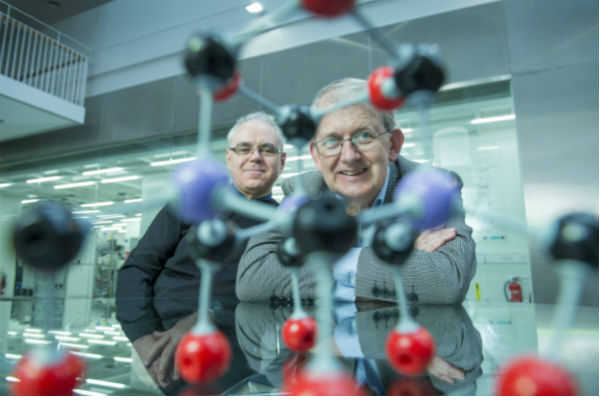
Leading Experts in Semiconductors, Electronics, Photonics and Modelling Convene in Cork for EU wide events on meeting our computing and related needs in the future
The Internet’s carbon footprint is already larger than the entire aviation industry, as the volume of Internet traffic increases exponentially every year, requiring more and more energy to fuel our communications. From smartphones to electronic devices that we all rely on every day, the underlying technologies, infrastructure and energy needs won’t be sustainable in the medium to long term. This challenge is a key focus of scientists involved in the EU funded DEEPEN project over the past 3 years, and their findings will be shared at workshops in Cork this week.

Speaking in advance of the events Prof. Eoin O’Reilly, DEEPEN project lead and Tyndall Chief Scientist, said “Each time we ask Google a question, we access a giant data centre of highly interconnected computers. The transistors and interconnects sitting at their core are all consuming so much energy that a major design issue for data centres is how to manage the level of heat created by computer components. Our modern way of living and communication is creating new challenges, and through the DEEPEN project, scientists at Tyndall are working with counterparts and industry across Europe, including Osram and Synopsys, to solve these real issues.”
The focus of Prof. Eoin O’Reilly, his colleagues at Tyndall National Institute and partners in the project is to develop simulation techniques that not only leverage existing technologies and materials to dramatically enhance the capabilities of incumbent infrastructure, but can also guide the development of new materials like III-V semiconductors and 2D materials to advance future device applications and quantum computing methods.
The critical regions in exiting devices can be as little as 20 atoms wide – these regions need to be treated in full detail for accurate simulation without compromising the higher level simulation of the full device structure.
“We have been looking in DEEPEN at specific device parts at atomistic level, generating multiscale simulations that link the atomistic behavior to the overall device performance, and ultimately creating new open source interfaces for developing products for the future. Within 3 years, we have advanced our knowledge significantly and the DEEPEN project has had global impact, bringing together leading minds from academia and industry to generate new solutions to our current and future issues,” added Prof. O’Reilly.

In short, the DEEPEN project is driving forward our capability for accurate and reliable device modelling and design, through collaboration and extensive research in modeling and computation methods for semiconductors.
The new tools developed in DEEPEN are finding direct commercial application in the future modelling tools of the project software partners, Synopsys and TiberLAB. TiberLAB are hosting the open source multiscale software developed in DEEPEN. Their CEO, Dr. Fabio Sacconi, stated: “DEEPEN has been of critical value to us. We prize the opportunity that it has given us to build and re-inforce our device simulation capabilities, of benefit not just for our products but also for the wider community through the open-source interfaces that we have developed.”
Science Foundation Ireland (SFI) have also funded the DEEPEN team in Ireland to build on the work of the project and combine the state-of-the-art existing methods with new methodologies, integrated within a multi-scale framework spanning from first principles to macroscopic continuum models.
The 3 year DEEPEN project, which was led by Tyndall National Institute, comes to an end in December 2016. Partners involved in the project included TiberLab (Italy), Osram Opto Semiconductors (Germany), SYNOPSYS (Switzerland) and ETH Zürich (Switzerland), UCC (Ireland) and Paul Drude Institut (Germany).
